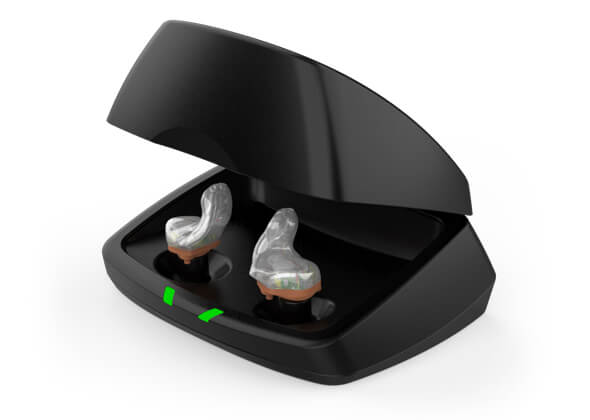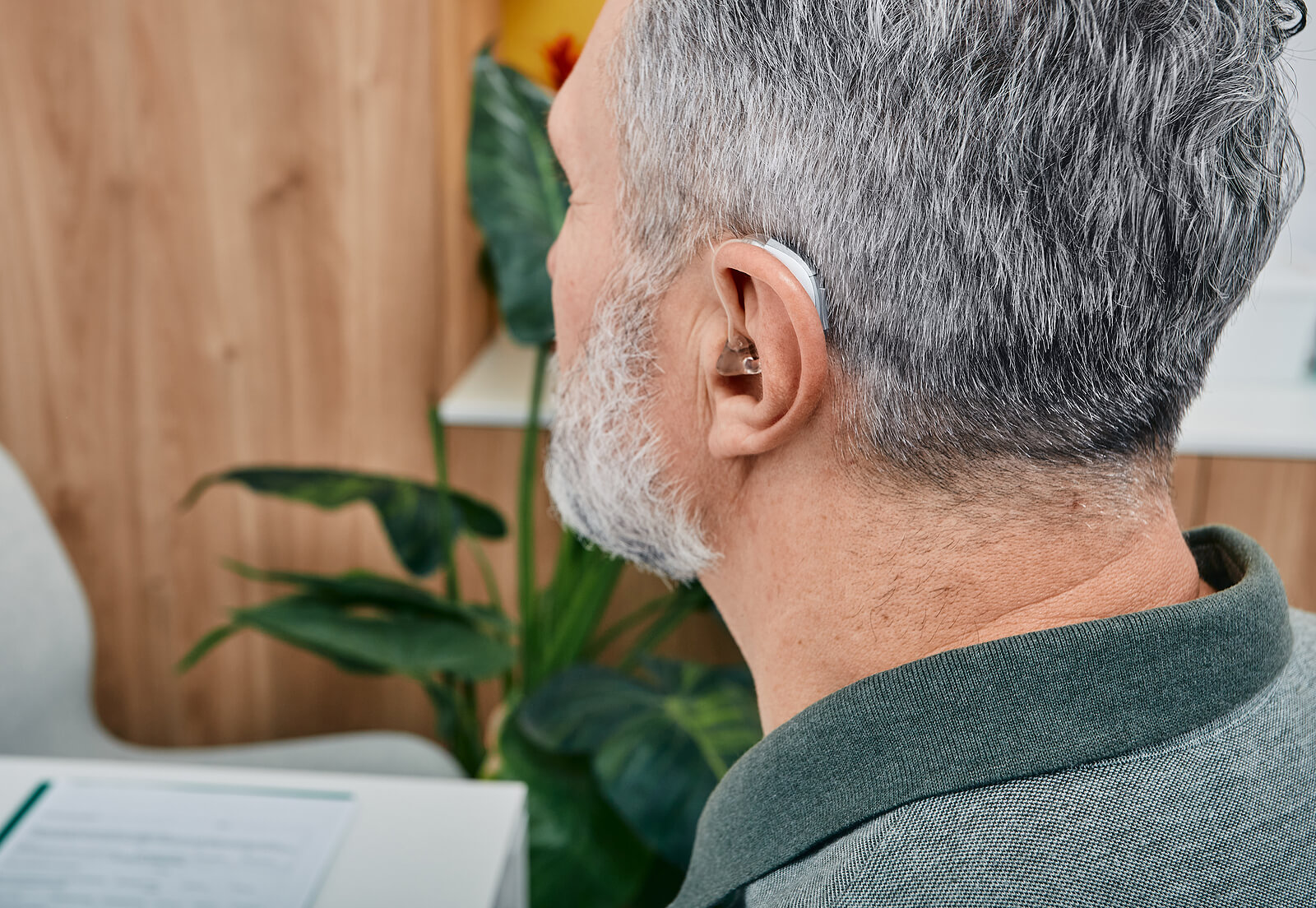Rechargeable Hearing Aids
Rechargeable hearing aids have become increasingly popular in the last few years, and for good reasons! The battery technology employed in hearing aids has improved greatly, to the point that rechargeable hearing aids are now the best option for most people, most of the time.

About Disposable Hearing Aid Batteries
Disposable hearing aid batteries come in four different sizes, for different-sized hearing aids. The technology used is called “zinc-air,” and it has been around for decades. They create power through a reaction between zinc and the oxygen in the air. For that reason, they have a shelf life. Fresher batteries provide power for a longer period of time.
Disposable hearing aid batteries come in four different sizes, for different-sized hearing aids. The technology used is called “zinc-air,” and it has been around for decades. They create power through a reaction between zinc and the oxygen in the air. For that reason, they have a shelf life. Fresher batteries provide power for a longer period of time.
Disposable batteries come sealed to prevent the zinc-air reaction from occurring before use. When you replace a battery, you need to pull the seal off of the fresh battery and let it sit in the open air for one minute before inserting it into the hearing aid. Depending on the size and use of the battery, disposable batteries can last anywhere from 3–22 days.
Once disposable batteries die, they must be stored safely away from pets and children, and recycled at a hearing aid retailer or other appropriate outlet.

About Rechargeable Hearing Aids
Rechargeable hearing aids come with the battery sealed inside the body of the hearing aid. Unlike hearing aids that use disposable batteries, they do not have a battery door, as the battery typically lasts as long as the hearing aid itself.
Rechargeable hearing aids use lithium-ion batteries. This is the same technology used in smartphones, laptops, tablets, and electric vehicles. Lithium-ion technology has advanced greatly in the previous decade, which is why it is now appropriate to power a set of hearing aids for a full day’s use.
Lithium-ion batteries require a bit more real estate inside a set of hearing aids than disposable zinc-air batteries do. For that reason, the hearing aids you’ll find in a rechargeable option tend to be larger styles, like BTE (behind-the-ear), RIC (receiver-in-canal), and some ITE (in-the-ear) models.
Most rechargeable hearing aids can work for 18 or more hours on a single charge. That provides a full day’s use for most people! At the end of the day when you take your hearing aids out, you place them on a charging station. After about three hours, they receive a full charge, and they’re ready to go again when you wake up in the morning.

Benefits of Rechargeable Hearing Aids
Rechargeable hearing aids have a few advantages over disposable batteries. For one, rechargeability means you no longer have to buy batteries, or maintain a supply. This means less shopping, less hassle, and less danger for pets and children. Zinc-air batteries, whether fresh or dead, pose a serious health hazard to children and pets when swallowed. While lithium-ion batteries are also hazardous, they tend to be swallowed far less often, as they stay inside your hearing aids, and you don’t need to keep spares around the house.
Rechargeables are also better for the environment. It’s not just the batteries themselves that create waste, but the manufacturing process that goes into producing each new disposable battery also creates problems for the environment over time. Lithium-ion batteries, on the other hand, are recycled at their end of life and the materials can be reused.
Finally, rechargeable hearing aids do not require an accessible battery compartment. The battery compartment in a set of hearing aids is one of the main points of entry for moisture and debris, which can degrade the sensitive electronics inside, over time. Rechargeables have a tighter seal against moisture and debris, which can help them to last longer. Some hearing aids can even be worn in the water, now, thanks to the tighter seal that is possible thanks to rechargeable technology.

Are Rechargeable Hearing Aids Right For Everyone?
Some people may still prefer hearing aids that employ disposable batteries. If you have trouble remembering to charge your smartphone overnight, for example, it may be that disposable batteries will be better for you. Those who travel or camp often and may not sleep next to an electric outlet every night may also prefer disposable batteries. Finally, smaller hearing aids do not have the real estate to accommodate rechargeable batteries. If discretion is important to you, rechargeability is still not an option for the smallest hearing aids.

